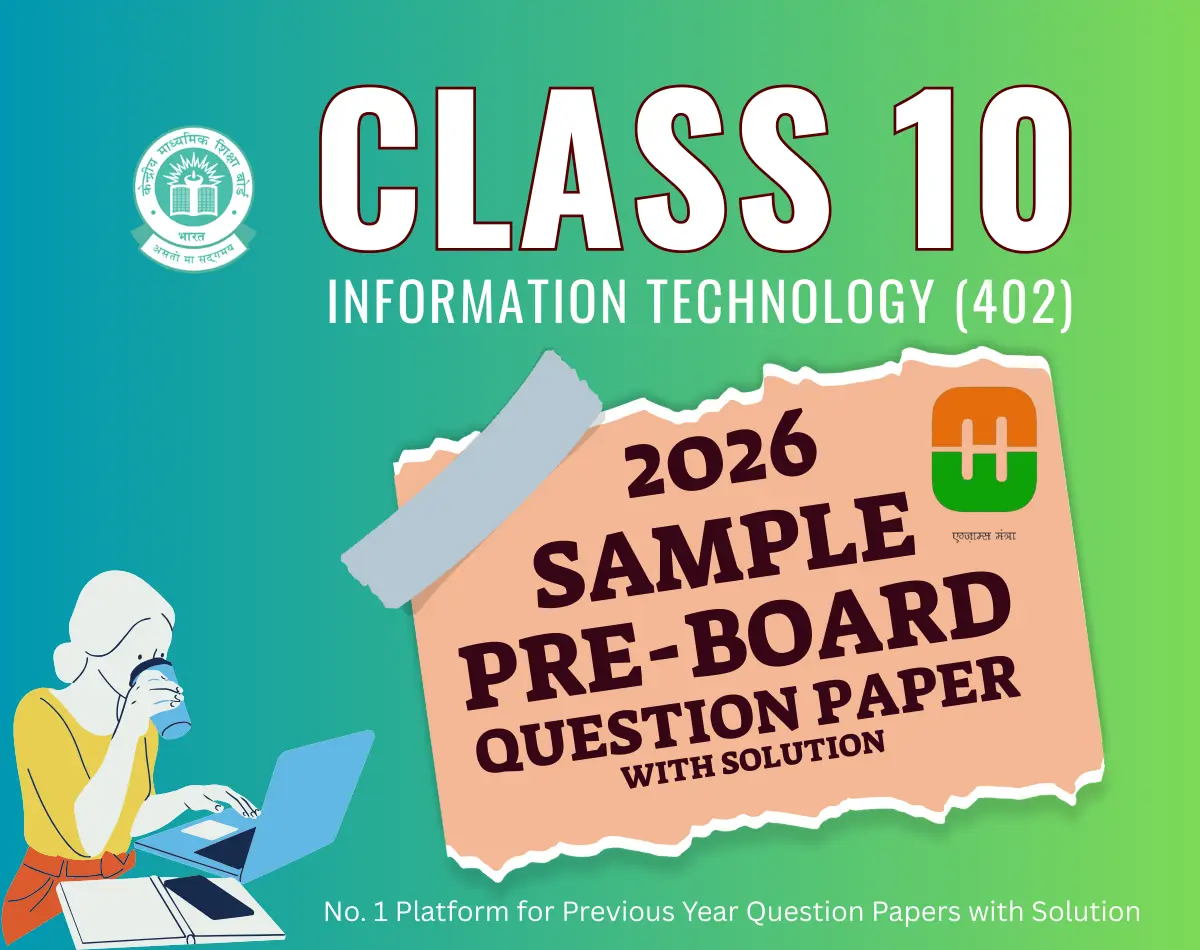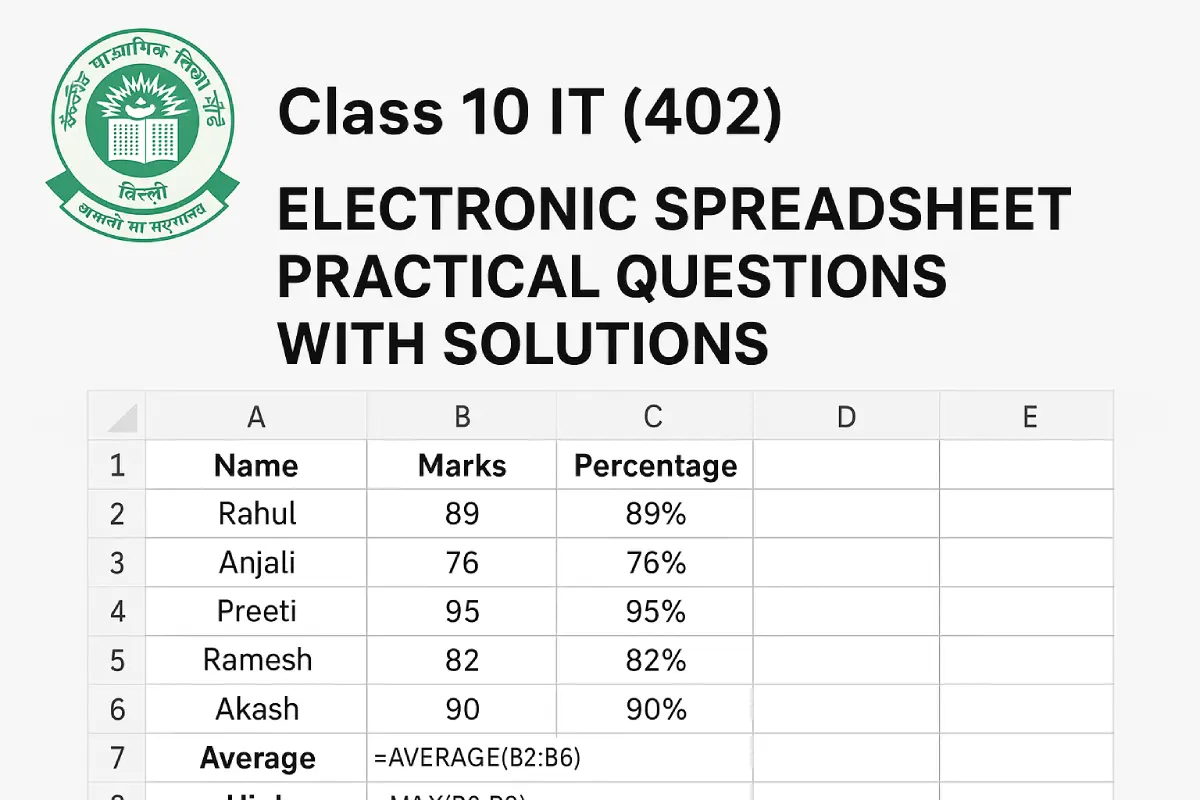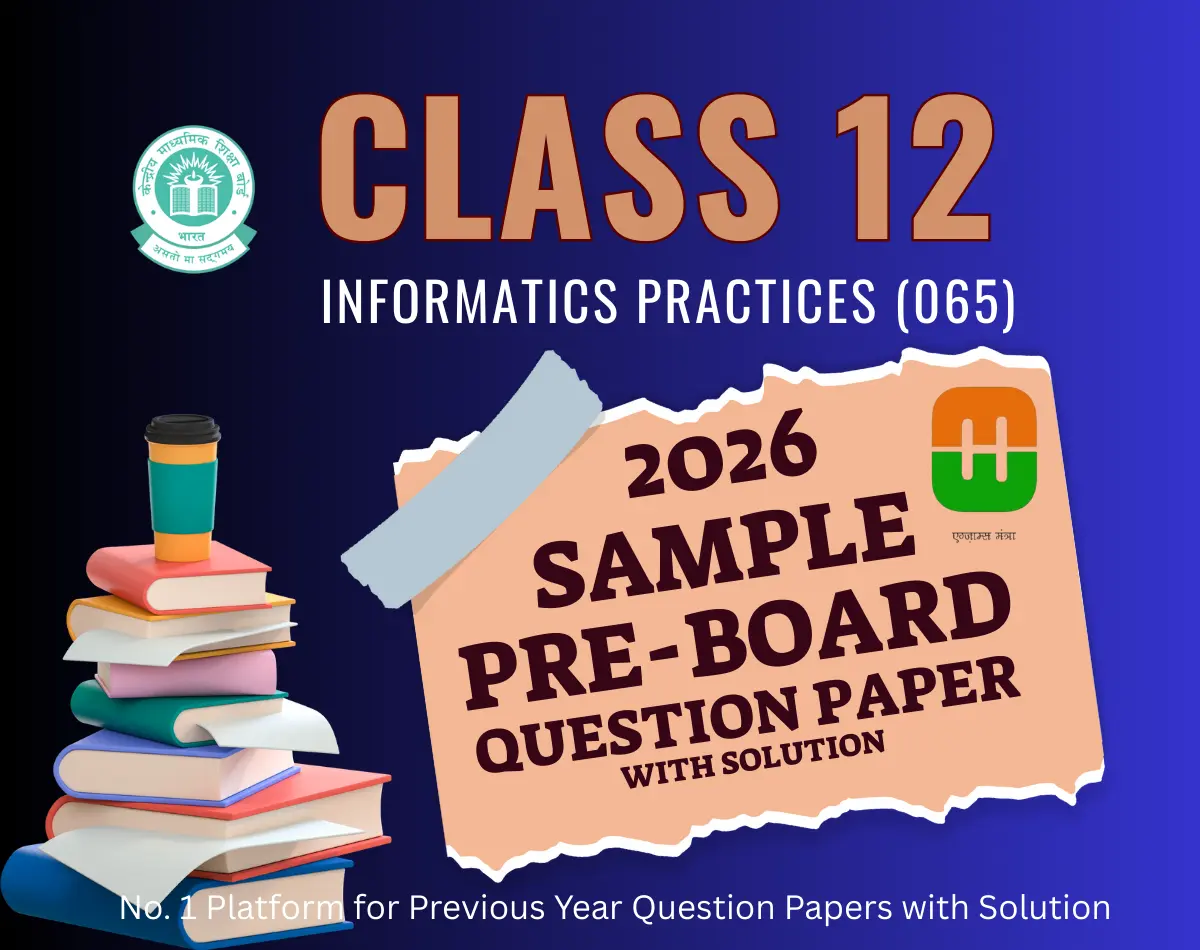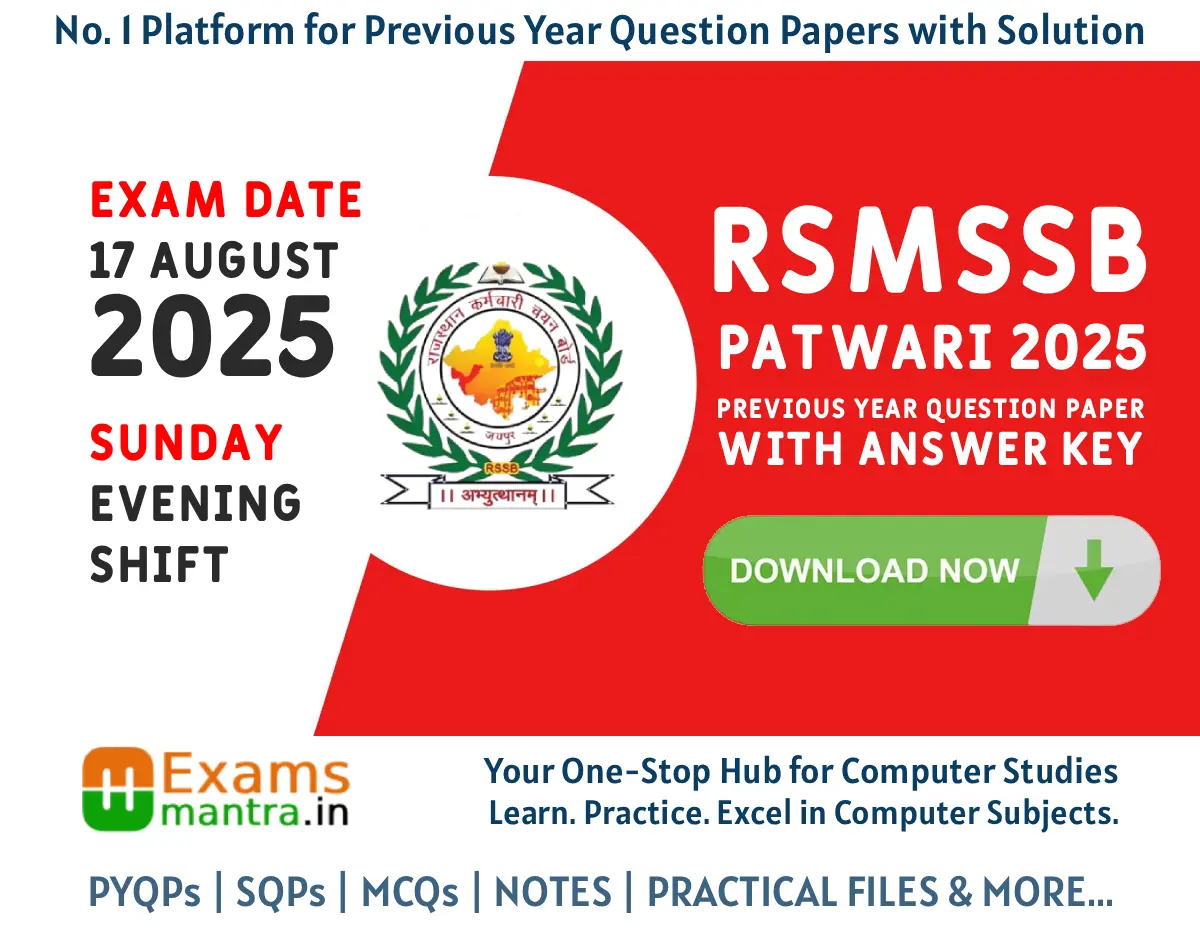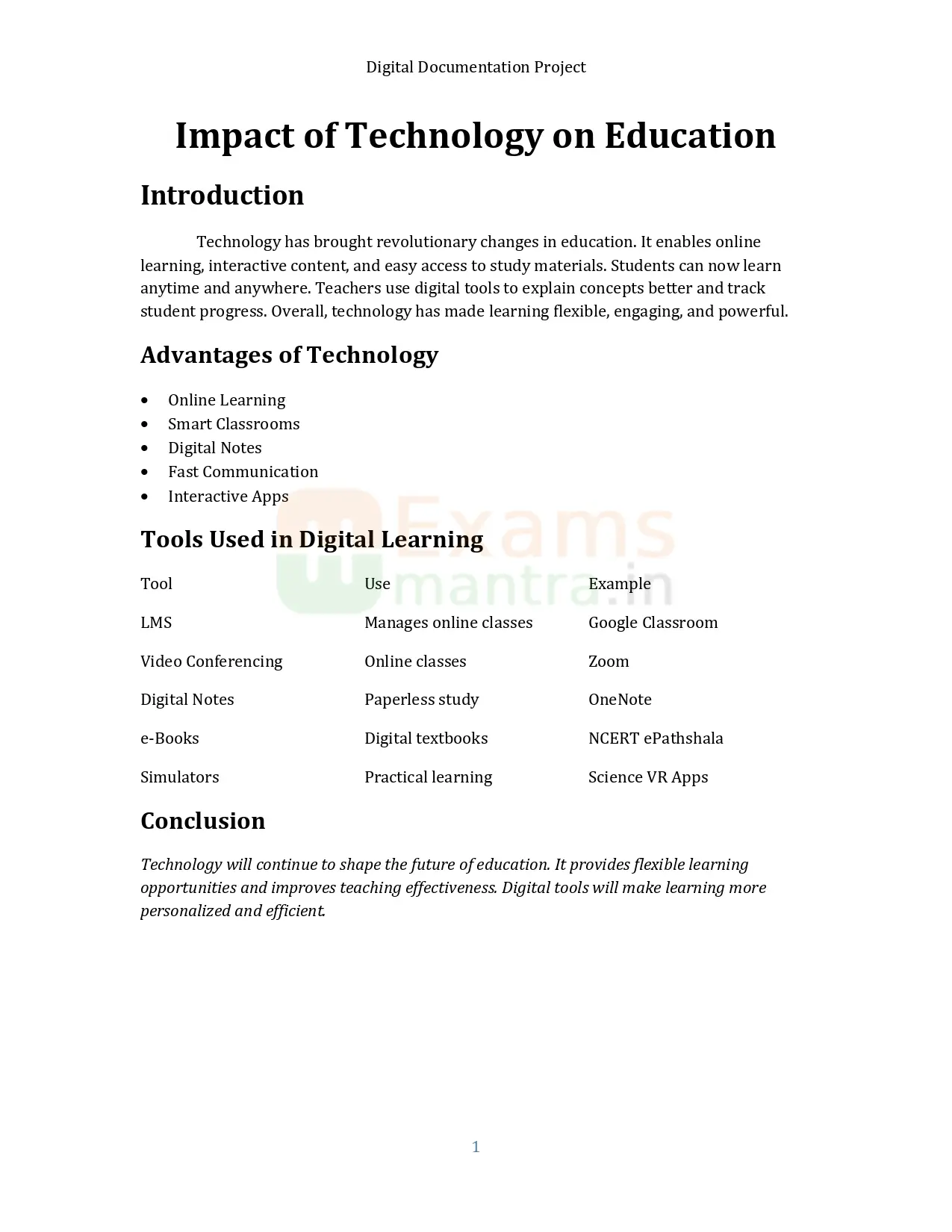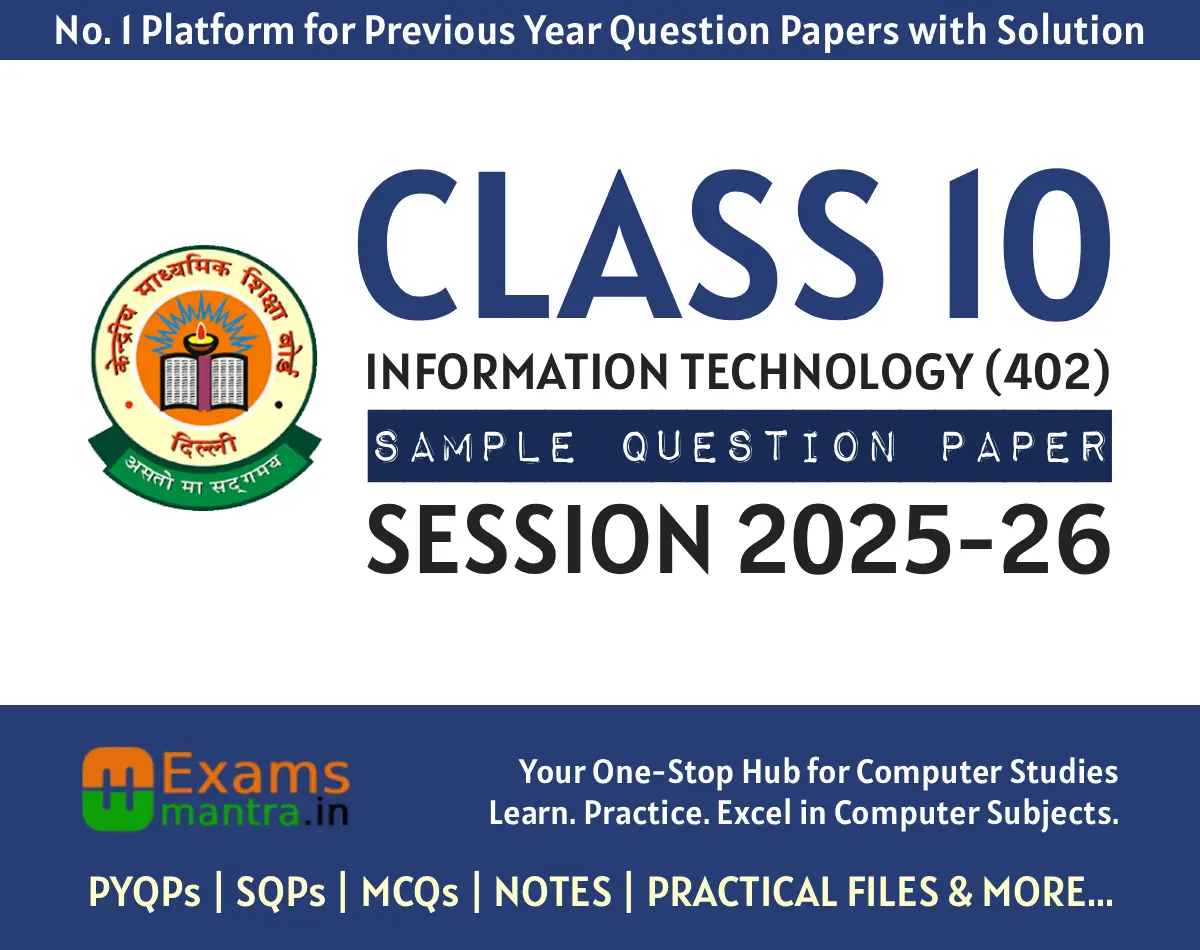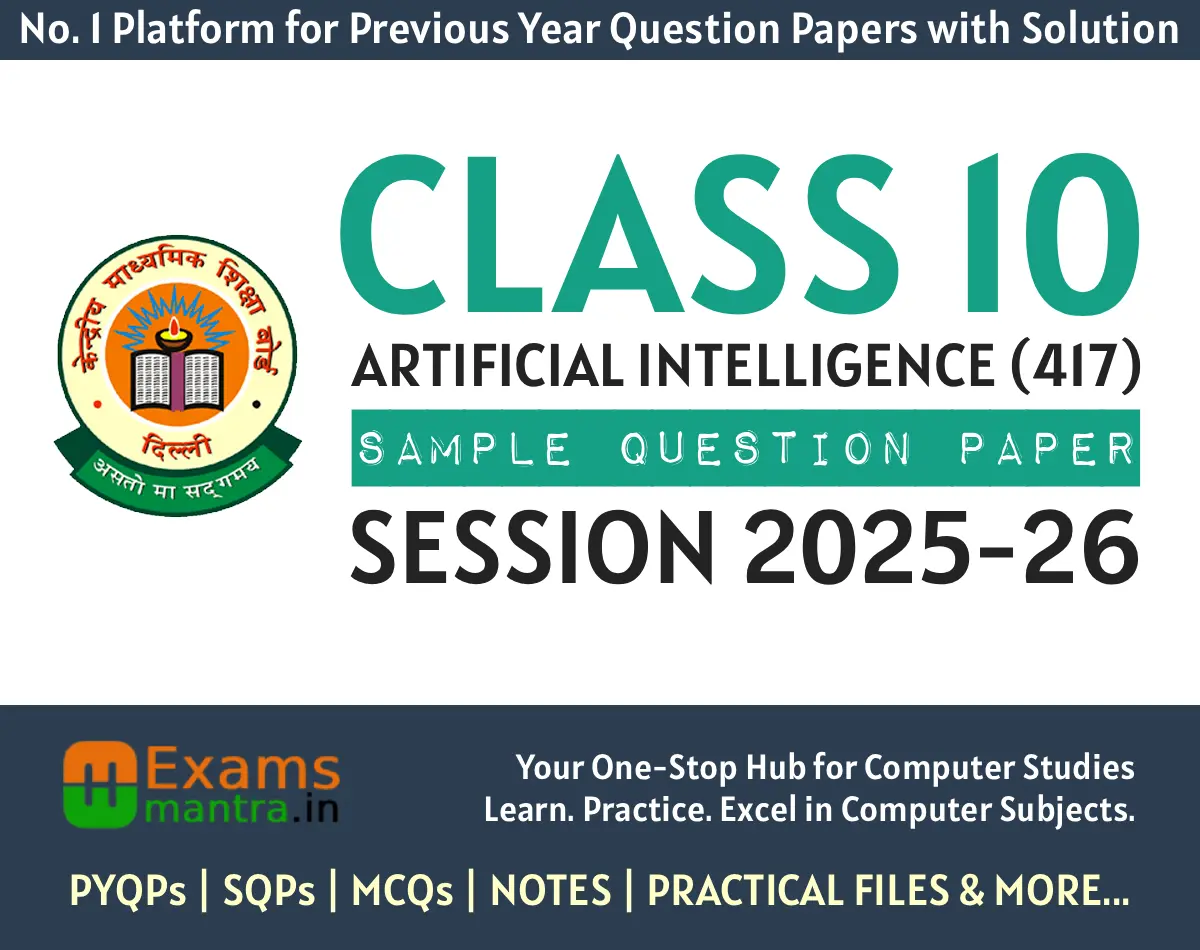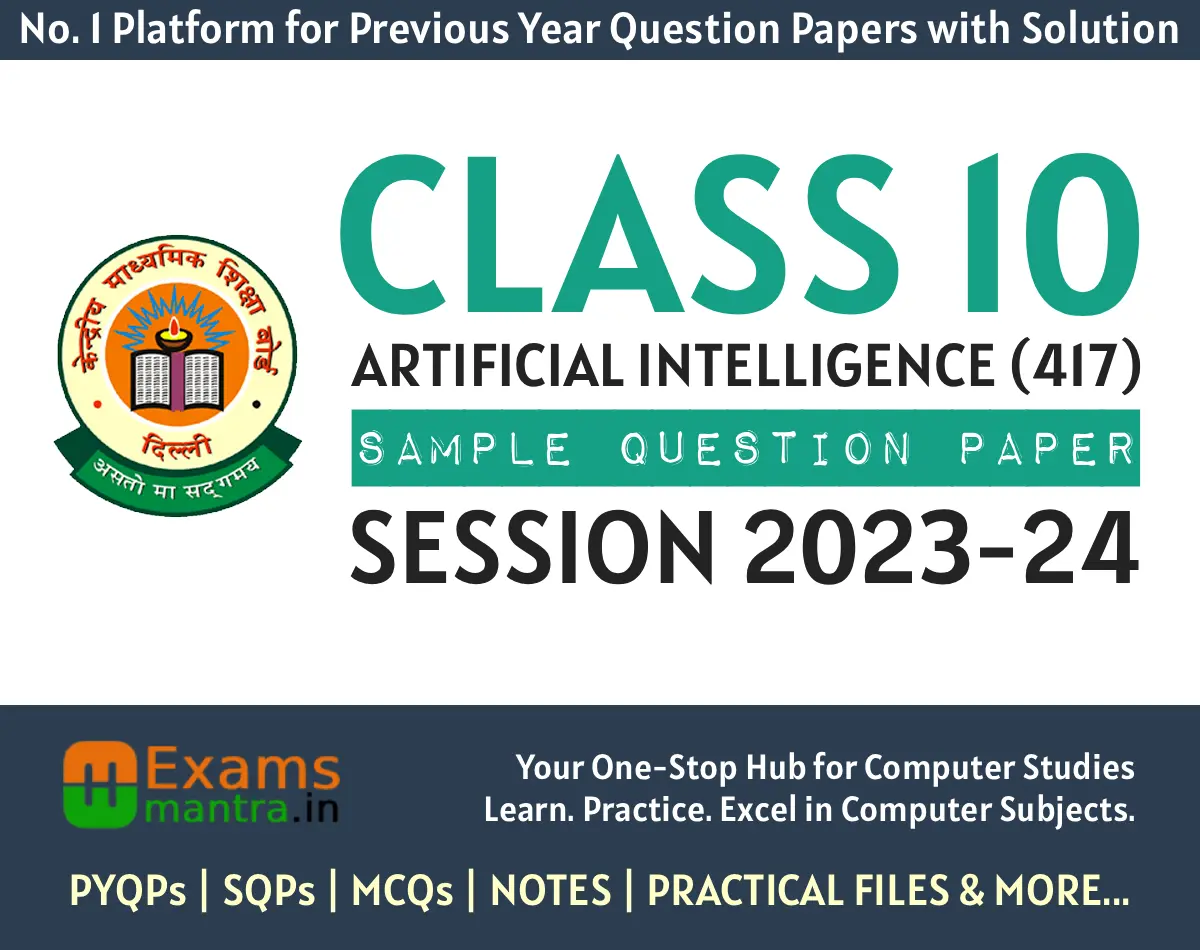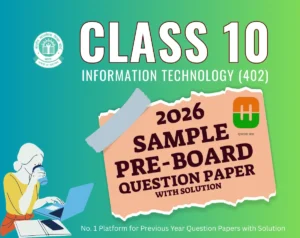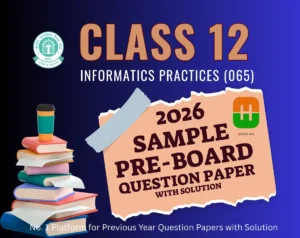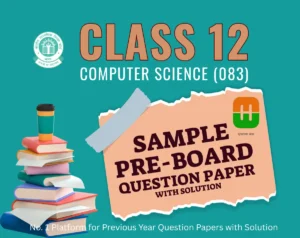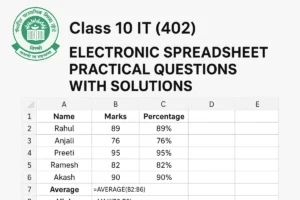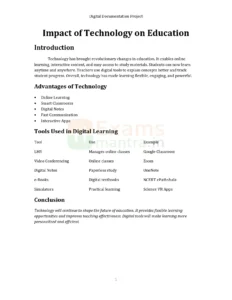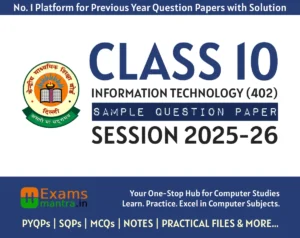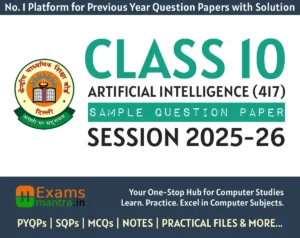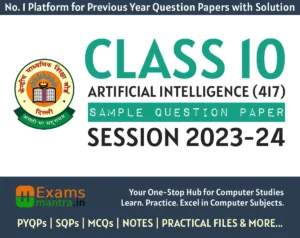Class 10 IT 402 Sample Pre-Board QP 2026 with Solution
The Class 10 IT 402 Sample Pre-Board Question Paper 2026 with solutions is designed to…
Class 12 IP 065 Sample Pre-Board QP 2026
The Class 12 Informatics Practices (IP) Sample Pre-Board Question Paper 2026 is designed to help…
Class 12 CS 083 Sample Pre-Board QP 2026 with Solution
Preparing for the Class 12 Computer Science (Code 083) board examination becomes much easier when…
Class 10 IT (402) – Electronic Spreadsheet Practical Questions with Solution
1. Consolidate Data You have monthly sales data for January, February, and March in three…
Class 10 IT (402) – Digital Documentation Practical Questions with Solution
Digital Documentation Practical File Questions Practical Question 1: Using MS Word, create a well-formatted Resume…
Class 10 IT Code 402 Sample Question Paper 2026 with Solution
CBSE has recently updated several Class 10 and 12 sample question papers for the 2026…
Class 10 AI Code 417 Sample Question Paper 2026 with Solution
CBSE Class 10 Artificial Intelligence (AI) Sample Question Paper 2026 with complete solutions and marking…
Class 10 AI Code 417 Sample Question Paper 2024 with Solution
Prepare effectively for your CBSE Class 10 Artificial Intelligence Board Exam 2024 with this official-style…
RSMSSB Patwari 2025 Shift 2 Question Paper with Solution
The RSMSSB Patwari 2025 Shift 2 Question Paper with Answer Key is a valuable resource…
Class 9 AI Code 417 Sample Question Paper 1
Prepare effectively for your CBSE Class 9 Artificial Intelligence Board Exam 2026 with this official-style…
